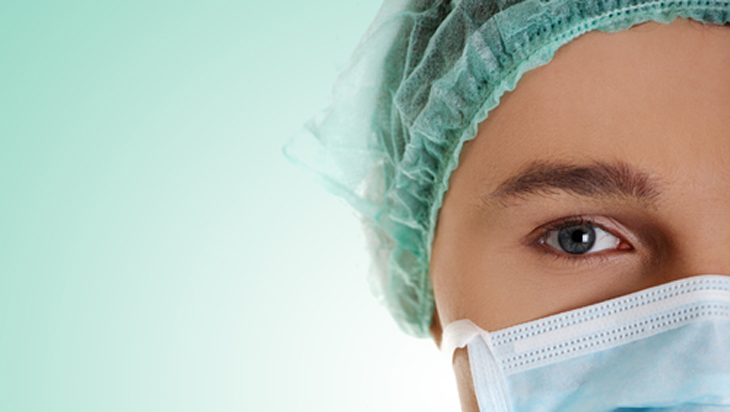The cervical cancer jab – how does it work?
By Kathryn Senior on 20 July 2022
The cervical cancer jab has only become available in the last couple of years and is being given to teenage girls to prevent them developing potentially fatal cervical cancer in their 20s and 30s. Cervical cancer does not happen because of the ageing process as many other cancers do; scientists have shown that 99% of cases are caused by the Human Papillomavirus (HPV). The cervical cancer jab works by vaccinating women against the most common cancer-causing types of HPV.
What is HPV?
HPV is a sexually-transmitted virus, also known as the wart virus, as some varieties cause genital warts. There are many different strains of HPV, not all of which are cancer-causing. Up to 75% of women who are or have been sexually active may be infected at some time in their lives. In most cases, the virus is harmless and is cleared from the system naturally. However, cancer-causing strains of the virus can lead to the growth of abnormal cells on the cervix. These pre-cancerous changes can become cancerous if not treated but can be picked up on a smear test. This makes it possible for treatment to be done very quickly to prevent the development of life-threatening cervical cancer.
Far fewer women would have to go through this, however, if they were vaccinated against the HPV virus. The cervical cancer vaccination jab could prevent a significant number of cervical cancers and could mean that many women never have to go through the worry of a positive smear test.
What types of cervical cancer jab are available?
Two different cervical cancer jabs have been developed, Cervarix and Gardasil. The cervical cancer jab that the Government has chosen for the vaccination program in school-age girls is Cervarix. Cervarix has been tested in a large clinical trial of 1,000 women aged under 26. Over 70,000 doses have been given in clinical trials, and more than a million doses have now been given in Britain alone. Cervarix is licensed in more than 90 countries; in the UK, it is licensed for the prevention of precancerous changes in the cervix in girls and women between the age of 10 and 25.
Who should have it?
The HPV vaccine is being offered as part of a national cervical cancer vaccination program to all girls in school Year 8 (aged 12 and 13). This is because research has shown that it is most effective to vaccinate girls before they become sexually active and encounter the virus. A catch-up program is also underway to provide the cervical cancer jab to older girls, up to the age of 18. Girls who are already sexually active before being vaccinated may not yet have encountered HPV, and even those who have may not have encountered the types of HPV that cause cancer. Therefore, vaccination against the most common cancer-causing types of HPV will still provide benefit.
What’s involved?
Every girl actually gets three cervical cancer jabs. The first injection is administered, followed by a second 1–2 months later. The third and final injection is given 6 months after the first, to complete the course. It is important to have all three injections in order to gain protection.
What are the benefits?
Cervical cancer kills more than 1,000 women per year in the UK. It is estimated that cervical cancer vaccination through the cervical cancer jab will save approximately 400 lives a year. However, it is important to remember that there are several cancer-causing types of HPV, and the cervical cancer jab does not protect against them all. It also will not provide protection against existing HPV infection. This is why the government has no plans to change the NHS National Screening Program for cervical cancer. Just because you have had the cervical cancer jab it is still very important that you get regular cervical smear tests. These are available for women between 25 and 49, every three years and for women between 49 and 65 every five years.
What are the risks associated?
The risks of cervical cancer are well established and are far greater than any risk associated with the cervical cancer jab. However, as with any vaccination, side-effects can occur. The most common are pain, discomfort, redness or swelling at the site of the injection, headaches, tiredness, or muscle pain/weakness.
Some people may also experience nausea, vomiting, diarrhoea or abdominal pain, rash, joint pain or fever, and very occasionally, dizziness or infection of the nose or throat. Rarely, the cervical cancer jab may cause an allergic reaction, but this is estimated to occur with only one in one million vaccinations.
Although the case of a school girl who sadly died after receiving the cervical cancer jab has been widely reported, it has since been shown that the cause of death was a malignant tumour and was not related to the cervical cancer jab.
If I have the cervical cancer jab, do I still need smear tests?
Yes. This can’t be emphasised enough. Cervical cancer jab does not protect against existing HPV infection or against all of the cancer-causing types of HPV. Therefore, smear tests are still extremely important in detecting early changes in the cells of the cervix so that they can be treated before they become cancerous. All women should start their regular smear tests at the age of 25, whether or not they have had the cervical cancer jab.
Did you enjoy this? Share:

